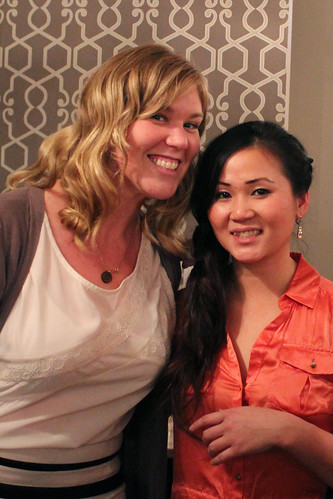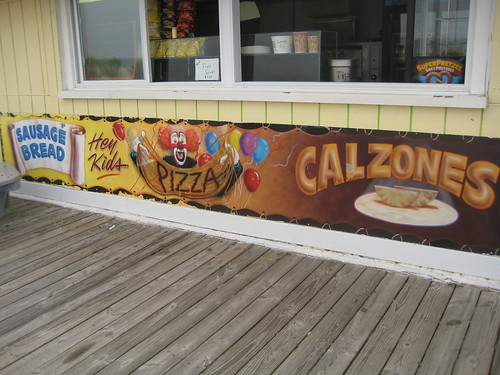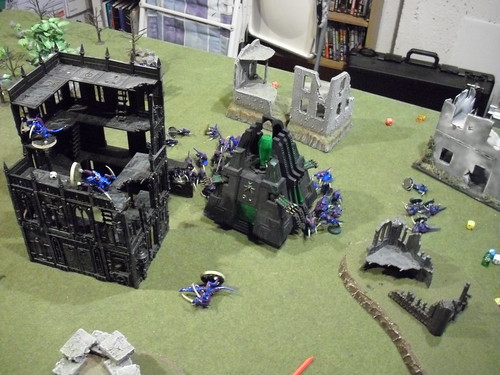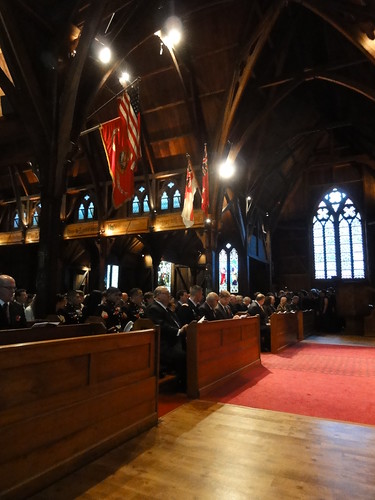(Source.Google.com.pk)
Psychic Question Biography
Joseph Banks Rhine (September 29, 1895 in Waterloo, Pennsylvania - February 20, 1980 in Hillsborough, North Carolina) (usually known as J. B. Rhine) was an American botanist who founded scientific research in parapsychology as a branch of psychology, founding the parapsychology lab at Duke University, the Journal of Parapsychology, the Foundation for Research on the Nature of Man, and the Parapsychological Association. Rhine wrote the books Extrasensory Perception and Parapsychology: Frontier Science of the Mind.Joseph Banks (J.B.) Rhine was the second child of five children born to Samuel Ellis Rhine and Elizabeth Vaughan Rhine in Waterloo, Pennsylvania. Samuel Rhine had been educated in a Harrisburg business college, had taught school and later been a farmer and merchant. The family moved to Marshallville, Ohio, when Joseph was in his early teens. Rhine grew up with a love of the outdoors.
He was educated at Ohio Northern University and the College of Wooster, after which he enlisted in the Marine Corps, being stationed in Santiago. Afterwards, he enrolled at the University of Chicago, where he received his master's degree in botany 1923 and Ph.D. in botany in 1925.While there, he and his wife were impressed by a May 1922 lecture given by Arthur Conan Doyle exulting the scientific proof of communication with the dead.Rhine later wrote, "This mere possibility was the most exhilarating thought I had had in years."
He taught for a year at Boyce Thompson Institute for Plant Research, in Yonkers, N.Y. Afterwards, he enrolled in the psychology department at Harvard University, to study for a year with Professor William McDougall. In 1927 he moved to Duke University to work under Professor McDougall. Rhine began the studies that helped develop parapsychology into a branch of science, looking upon it primarily as a branch of "abnormal psychology".
Biographical timeline
1895, Sept. 29: Born, Waterloo, Juniata County, Pennsylvania.
ca. 1915-1917 Attended Ohio Northern University and the College of Wooster as a preministerial student.
1919 Discharged from the U.S. Marine Corps.
1920 Married Louisa Ella Weckesser.
1922 Bachelor of Science in botany, University of Chicago.
1923 Master of Science in botany, University of Chicago.
1923-24 Research fellow in plant physiology at the Boyce Thompson Institute for Plant Research, Yonkers, New York.
1924-26 Taught plant physiology, West Virginia University in Morgantown.
1925 Ph.D. in botany, University of Chicago.
1926-27 Worked with Dr. Franklin Prince at the Boston Society for Psychical Research.
1927 Came to Duke University to work with Dr. William McDougall, who had just been named head of the Psychology Dept.
1928 Offered an instructorship in philosophy and psychology at Duke with understanding he could do psychical research as well.
1930 Under sponsorship of McDougall, founded Parapsychology Laboratory which at first was part of Duke Psychology Department.
1933-34 Ran tests on subjects to examine if they could move a deck of "ESP" cards with their minds alone.
1934 Published Extra-Sensory Perception.
ca. 1935 Laboratory was set apart from the Dept. of Psychology, given some financial support and became known as the Parapsychology Laboratory of Duke University.
1937 Launched the Journal of Parapsychology.
1962 Foundation for Research on the Nature of Man was established under Rhine's guidance.
1965 Retired from Duke and the Duke Parapsychology Laboratory was transferred into the Institute of Parapsychology under the sponsorship of the Foundation for Research on the Nature of Man.
1980, Feb. 20: Died, Hillsborough, North Carolina
Research
Rhine tested many students as volunteer subjects in his research project. His first exceptional subject in this ESP research was Adam Linzmayer, an economics undergraduate at Duke. In the spring of 1931, Linzmayer scored very high in preliminary Zener-card tests that Rhine ran him through; initially, he scored 100% correct on two short (nine-card series) tests that Rhine gave him. Even in his first long test (a 300-card series), Linzmayer scored 39.6% correct scores, when chance would have been only 20%. He consecutively scored 36% each time on three 25-card series (chance being 20%). However, over time, Linzmayer's scores began to drop down much closer to (but still above) chance averages. Boredom, distraction, and competing obligations, on Linzmayer’s part, were conjectured as possible factors bearing on the declining test results.Linzmayer's epic run of naming 21 out of 25 took place in Rhine's car.
The following year, Rhine tested another promising individual, Hubert Pearce, who managed to surpass Linzmayer’s overall 1931 performance. (Pearce’s average during the period he was tested in 1932 was 40%, whereas chance would have been 20%). Pearce was actually allowed to handle the cards most of the time. He shuffled and cut them.
The most famous series of experiments from Rhine's laboratory is arguably the ESP tests involving Hubert Pearce and J. G. Pratt, a research assistant. Pearce was tested (using Zener cards) by Pratt, who shuffled and recorded the order of the cards in the parapsychology lab 100 yards from where Pearce was sitting in a campus library cubicle. The series comprised 37 25-trial runs, conducted between August 1933 and March 1934. From run to run, the number of matches between Pratt's cards and Pearce's guesses was highly variable, generally deviating significantly above-chance, but also falling dramatically below-chance. These scores were obtained irrespective of the distance between Pratt and Pearce, which was arranged as either 100 or 250 yards.
In 1934, drawing upon several years of meticulous lab research and statistical analysis, Rhine published the first edition of a book titled Extrasensory Perception, which in various editions was widely read over the next decades.
In the later 1930s, Rhine investigated “psychokinesis” – again reducing the subject to simple terms so that it could be tested, with controls, in a laboratory setting. Rhine relied on testing whether a subject could influence the outcome of tossed dice – initially with hand-thrown dice, later with dice thrown from a cup, and finally with machine-thrown dice.
In 1940 Rhine co-authored with J. G. Pratt and other associates at Duke Extra-Sensory Perception After Sixty Years,a review of all experimental studies of telepathy and clairvoyance that they could identify in scientific journals and other published sources. It has been recognized as the first meta-analysis in the history of science.In the course of reviewing their methods and findings, it rated the studies on evidentiality, examined hypotheses other than ESP, and discussed what generalizations might be drawn from them. Additionally, as many of those persons as possible who had published criticism of the research were sent drafts of the book, and invited to offer their comments for publication within it. Only three took up the offer, of which only one maintained an adamant criticism.
During the War years, Rhine lost most of his male staff members to war work or the military. This caused something of an hiatus in the conduct of new research, but the opportunity was taken to publish the large back-log of experiments that, since the early 1930s, had been conducted on psychokinesis. After the War, he had occasion to study some dramatic cases outside the lab.
Rhine’s wife, Dr. Louisa Rhine, pursued work that complemented her husband’s in the later 1940s, gathering information on spontaneous ESP reports (experiences people had, outside of a laboratory setting). Yet J. B. Rhine believed that a good groundwork should be laid in the lab, so that the scientific community might take parapsychology seriously.
In the early 1960s, Rhine left Duke and founded the Institute for Parapsychology which later became the Foundation for Research on the Nature of Man. In the 1970s, several high-scoring subjects – Sean Harribance, M.B. Dykshoorn, and Bill Delmore – were tested in the lab, shortly before Rhine’s retirement.
Rhine, along with William McDougall, introduced the term "parapsychology" (translating a German term coined by Max Dessoir). It is sometimes said that Rhine almost single-handedly developed a methodology and concepts for parapsychology as a form of experimental psychology; however great his contributions, some earlier work along similar — analytical and statistical — lines had been undertaken sporadically in Europe, notably the experimental work of Sir Oliver Lodge.
Rhine founded the institutions necessary for parapsychology's continuing professionalization in the U.S. — including the establishment of the Journal of Parapsychology and the formation of the Parapsychological Association,[8] and also the Foundation for Research on the Nature of Man (FRNM), a precursor to what is today known as the Rhine Research Center. His parapsychology research organization was originally affiliated with Duke University, but is now separate.
According to sceptical commentators, such as Martin Gardner, Rhine's results have never been duplicated. This includes the claim that Rhine repeatedly tried to replicate his work, but produced only failures that he never reported.
Gardner also criticized Rhine for not disclosing the names of assistants he caught cheating:
His paper "Security Versus Deception in Parapsychology" published in his journal (vol. 38, 1974), runs to 23 pages. Rhine selects twelve sample cases of dishonest experimenters that came to his attention from 1940 to 1950, four of whom were caught "red-handed". Not a single name is mentioned. What papers did they publish, one wonders.
This has suggested to Gardner that Rhine practised a "secrecy policy".
Gardner has also claimed to have inside information that Rhine's files contain "material suggesting fraud on the part of Hubert Pearce", but such information has not been independently confirmed.










Psychic Question Biography
He was educated at Ohio Northern University and the College of Wooster, after which he enlisted in the Marine Corps, being stationed in Santiago. Afterwards, he enrolled at the University of Chicago, where he received his master's degree in botany 1923 and Ph.D. in botany in 1925.While there, he and his wife were impressed by a May 1922 lecture given by Arthur Conan Doyle exulting the scientific proof of communication with the dead.Rhine later wrote, "This mere possibility was the most exhilarating thought I had had in years."
He taught for a year at Boyce Thompson Institute for Plant Research, in Yonkers, N.Y. Afterwards, he enrolled in the psychology department at Harvard University, to study for a year with Professor William McDougall. In 1927 he moved to Duke University to work under Professor McDougall. Rhine began the studies that helped develop parapsychology into a branch of science, looking upon it primarily as a branch of "abnormal psychology".
Biographical timeline
1895, Sept. 29: Born, Waterloo, Juniata County, Pennsylvania.
ca. 1915-1917 Attended Ohio Northern University and the College of Wooster as a preministerial student.
1919 Discharged from the U.S. Marine Corps.
1920 Married Louisa Ella Weckesser.
1922 Bachelor of Science in botany, University of Chicago.
1923 Master of Science in botany, University of Chicago.
1923-24 Research fellow in plant physiology at the Boyce Thompson Institute for Plant Research, Yonkers, New York.
1924-26 Taught plant physiology, West Virginia University in Morgantown.
1925 Ph.D. in botany, University of Chicago.
1926-27 Worked with Dr. Franklin Prince at the Boston Society for Psychical Research.
1927 Came to Duke University to work with Dr. William McDougall, who had just been named head of the Psychology Dept.
1928 Offered an instructorship in philosophy and psychology at Duke with understanding he could do psychical research as well.
1930 Under sponsorship of McDougall, founded Parapsychology Laboratory which at first was part of Duke Psychology Department.
1933-34 Ran tests on subjects to examine if they could move a deck of "ESP" cards with their minds alone.
1934 Published Extra-Sensory Perception.
ca. 1935 Laboratory was set apart from the Dept. of Psychology, given some financial support and became known as the Parapsychology Laboratory of Duke University.
1937 Launched the Journal of Parapsychology.
1962 Foundation for Research on the Nature of Man was established under Rhine's guidance.
1965 Retired from Duke and the Duke Parapsychology Laboratory was transferred into the Institute of Parapsychology under the sponsorship of the Foundation for Research on the Nature of Man.
1980, Feb. 20: Died, Hillsborough, North Carolina
Research
Rhine tested many students as volunteer subjects in his research project. His first exceptional subject in this ESP research was Adam Linzmayer, an economics undergraduate at Duke. In the spring of 1931, Linzmayer scored very high in preliminary Zener-card tests that Rhine ran him through; initially, he scored 100% correct on two short (nine-card series) tests that Rhine gave him. Even in his first long test (a 300-card series), Linzmayer scored 39.6% correct scores, when chance would have been only 20%. He consecutively scored 36% each time on three 25-card series (chance being 20%). However, over time, Linzmayer's scores began to drop down much closer to (but still above) chance averages. Boredom, distraction, and competing obligations, on Linzmayer’s part, were conjectured as possible factors bearing on the declining test results.Linzmayer's epic run of naming 21 out of 25 took place in Rhine's car.
The following year, Rhine tested another promising individual, Hubert Pearce, who managed to surpass Linzmayer’s overall 1931 performance. (Pearce’s average during the period he was tested in 1932 was 40%, whereas chance would have been 20%). Pearce was actually allowed to handle the cards most of the time. He shuffled and cut them.
The most famous series of experiments from Rhine's laboratory is arguably the ESP tests involving Hubert Pearce and J. G. Pratt, a research assistant. Pearce was tested (using Zener cards) by Pratt, who shuffled and recorded the order of the cards in the parapsychology lab 100 yards from where Pearce was sitting in a campus library cubicle. The series comprised 37 25-trial runs, conducted between August 1933 and March 1934. From run to run, the number of matches between Pratt's cards and Pearce's guesses was highly variable, generally deviating significantly above-chance, but also falling dramatically below-chance. These scores were obtained irrespective of the distance between Pratt and Pearce, which was arranged as either 100 or 250 yards.
In 1934, drawing upon several years of meticulous lab research and statistical analysis, Rhine published the first edition of a book titled Extrasensory Perception, which in various editions was widely read over the next decades.
In the later 1930s, Rhine investigated “psychokinesis” – again reducing the subject to simple terms so that it could be tested, with controls, in a laboratory setting. Rhine relied on testing whether a subject could influence the outcome of tossed dice – initially with hand-thrown dice, later with dice thrown from a cup, and finally with machine-thrown dice.
In 1940 Rhine co-authored with J. G. Pratt and other associates at Duke Extra-Sensory Perception After Sixty Years,a review of all experimental studies of telepathy and clairvoyance that they could identify in scientific journals and other published sources. It has been recognized as the first meta-analysis in the history of science.In the course of reviewing their methods and findings, it rated the studies on evidentiality, examined hypotheses other than ESP, and discussed what generalizations might be drawn from them. Additionally, as many of those persons as possible who had published criticism of the research were sent drafts of the book, and invited to offer their comments for publication within it. Only three took up the offer, of which only one maintained an adamant criticism.
During the War years, Rhine lost most of his male staff members to war work or the military. This caused something of an hiatus in the conduct of new research, but the opportunity was taken to publish the large back-log of experiments that, since the early 1930s, had been conducted on psychokinesis. After the War, he had occasion to study some dramatic cases outside the lab.
Rhine’s wife, Dr. Louisa Rhine, pursued work that complemented her husband’s in the later 1940s, gathering information on spontaneous ESP reports (experiences people had, outside of a laboratory setting). Yet J. B. Rhine believed that a good groundwork should be laid in the lab, so that the scientific community might take parapsychology seriously.
In the early 1960s, Rhine left Duke and founded the Institute for Parapsychology which later became the Foundation for Research on the Nature of Man. In the 1970s, several high-scoring subjects – Sean Harribance, M.B. Dykshoorn, and Bill Delmore – were tested in the lab, shortly before Rhine’s retirement.
Rhine, along with William McDougall, introduced the term "parapsychology" (translating a German term coined by Max Dessoir). It is sometimes said that Rhine almost single-handedly developed a methodology and concepts for parapsychology as a form of experimental psychology; however great his contributions, some earlier work along similar — analytical and statistical — lines had been undertaken sporadically in Europe, notably the experimental work of Sir Oliver Lodge.
Rhine founded the institutions necessary for parapsychology's continuing professionalization in the U.S. — including the establishment of the Journal of Parapsychology and the formation of the Parapsychological Association,[8] and also the Foundation for Research on the Nature of Man (FRNM), a precursor to what is today known as the Rhine Research Center. His parapsychology research organization was originally affiliated with Duke University, but is now separate.
According to sceptical commentators, such as Martin Gardner, Rhine's results have never been duplicated. This includes the claim that Rhine repeatedly tried to replicate his work, but produced only failures that he never reported.
Gardner also criticized Rhine for not disclosing the names of assistants he caught cheating:
His paper "Security Versus Deception in Parapsychology" published in his journal (vol. 38, 1974), runs to 23 pages. Rhine selects twelve sample cases of dishonest experimenters that came to his attention from 1940 to 1950, four of whom were caught "red-handed". Not a single name is mentioned. What papers did they publish, one wonders.
This has suggested to Gardner that Rhine practised a "secrecy policy".
Gardner has also claimed to have inside information that Rhine's files contain "material suggesting fraud on the part of Hubert Pearce", but such information has not been independently confirmed.
Free Psychic Question

Free Psychic Question

Free Psychic Question

Free Psychic Question

Free Psychic Question

Free Psychic Question

Free Psychic Question

Free Psychic Question

Free Psychic Question

Free Psychic Question

Free Psychic Question
Ever since my husband got me divorced for the past 2 years, i v'e not been my self. I was reviewing some post of how i could get back my husband then, i saw a testimony shared by Marina Choas from SWEDEN about a spell caster named Dr. tunde. I contacted Marina Chaos to confirm about how Dr. tunde helped her and she clarified everything to me of how he helped her and that gave me the courage to get in touch with Dr. tunde for help. Dr. tunde assured me that my days of sorrows will be over within 48hours after he has finished with his work. I followed his instructions he gave to me because i had the believe, faith, hope and trust in him. Verily i say to you today that i and my husband are back together and i can proudly say and testify to the world of what Dr. tunde did for me. Contact him today via E-mail:(babatundesolutioncentre1@gmail.com) OR call him or whatsapp him +2348143581382 if you seek his help. Also specialize in treating all kinds of illness, HERPES VIRUS, HEPATITIS B, CANCER, BRAIN DISEASE, INFERTILITY, DIABETES AND MORE
ReplyDelete